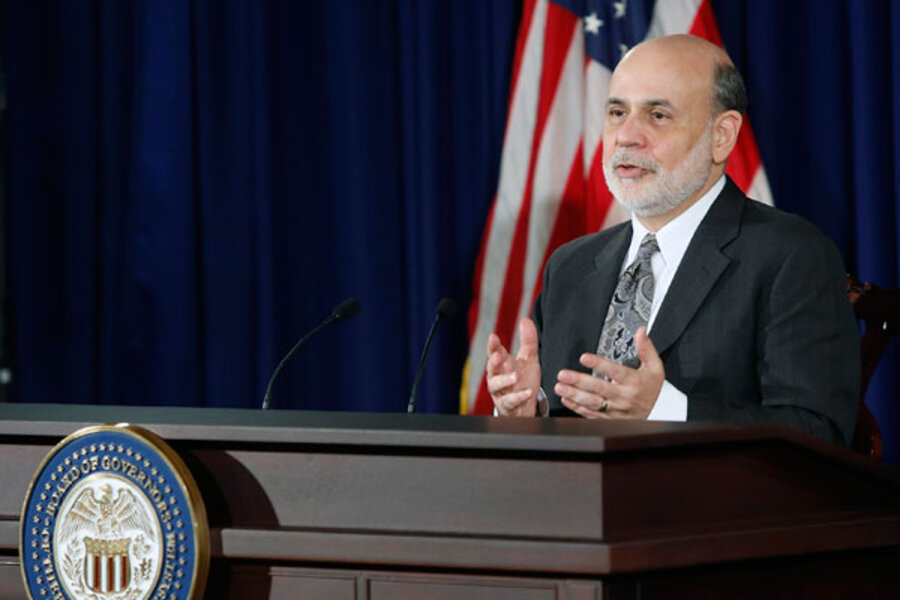Federal Reserve finally hits 'taper' button … and markets like it
Loading...
| Washington
The Federal Reserve decided Wednesday to modestly reduce the size of monthly bond purchases that are designed to boost the pace of economic recovery. But it carefully worded its announcement to signal that the central bank remains committed to boosting still-tepid US growth.
It’s a small step but an important one.
The Fed now plans to buy about $75 billion per month of Treasury and mortgage agency bonds, down from $85 billion.
That’s significant not so much for its scale as for what it signals: The end of the “QE” era, the quantitative easing of monetary policy by enlarging the Fed’s bond portfolio, appears to be on the horizon.
“My expectation is for similar moderate steps going forward throughout most of 2014,” said Ben Bernanke, speaking after the meeting in his final press conference as Fed Chairman before stepping down in January. He said that course will depend on how the economy performs.
The change in policy doesn’t mean the Fed is now “tightening,” as when it raises interest rates in an effort to restrain a too-hot economy. America’s central bank will still be expanding its balance sheet every month, buying bonds in an effort to keep long-term interest rates low.
Stock prices surged on the news, treating it as welcome news on two fronts. First, it’s a sign of Fed confidence that brighter days are ahead for the economy. Second, investors welcomed a Fed statement showing that policymakers are still determined to keep their foot on the monetary accelerator.
The nation’s official unemployment rate is 7 percent, and not all economists agree with Mr. Bernanke and other Fed officials who say QE has been helping.
The Fed’s policymaking committee took pains not to frame its announcement with a “mission accomplished” spin.
Instead, the Fed committee paired its long-awaited reduction in QE with a new effort to give “forward guidance” about its intentions on interest rates.
“The Committee today reaffirmed its view that a highly accommodative stance of monetary policy will remain appropriate for a considerable time after the asset purchase program ends and the economic recovery strengthens,” the Fed’s statement said.
In the past, the Fed has said its short-term interest rate for banks will remain near zero percent at least until the unemployment rate falls to 6.5 percent, if inflation remains contained.
On Wednesday, the policymakers said it will probably be appropriate to keep the zero interest rate in place “well past the time” that unemployment falls to 6.5 percent, “especially if projected inflation continues to run below the Committee's 2 percent longer-run goal.”
The statement reflects the view that unemployment is the economy’s big problem, while inflation shows no signs of getting out of control.
By inserting the new language on interest rates, the central bank got the “taper” of QE off to a carefully calibrated start.
Back in the spring and summer, growing “taper talk” from Fed officials rattled financial markets, as investors worldwide wondered if major interest rate shifts were around the corner.
Treasury-bond prices fell, and interest rates edged up, on Wednesday’s announcement. Bond investors were digesting the idea that the Fed won’t be such a big buyer in the market. But investors have had many months to ponder that likelihood, and the Fed has fine-tuned its communication.
Interest rates on Treasury bonds remain historically low, with 10-year notes yielding less than 3 percent annual interest.
Bernanke said the timing of the taper decision hinged on economic conditions, not the pending transition at the helm as he exits and Janet Yellen (if confirmed by the US Senate) takes the job.
But he said the two see eye-to-eye on the policy as announced.
“I consulted closely with her on these decisions,” he said. “She fully supports what we did today.”








